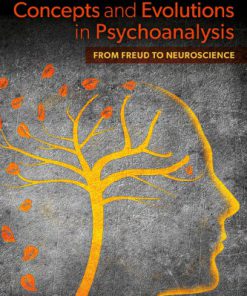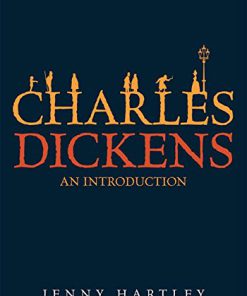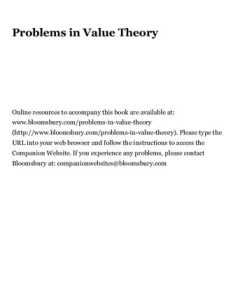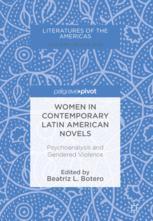Introduction to Contemporary Psychoanalysis 1st Edition by Marilyn Charles 9781351718394 1351718398
$50.00 Original price was: $50.00.$25.00Current price is: $25.00.
Introduction to Contemporary Psychoanalysis 1st Edition by Marilyn Charles – Ebook PDF Instant Download/Delivery:9781351718394,1351718398
Full download Introduction to Contemporary Psychoanalysis 1st Edition after payment
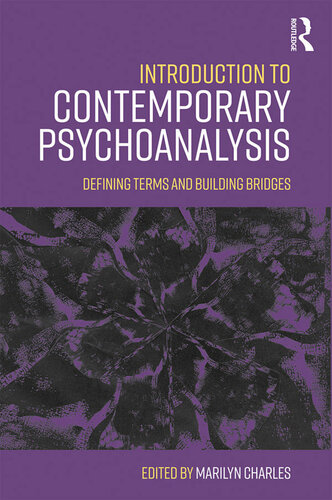
Product details:
ISBN 10:1351718398
ISBN 13:9781351718394
Author:Marilyn Charles
This book provides a clear introduction to the main contemporary psychoanalytic theoretical perspectives. Psychoanalysis is often thought of as an obscure and outdated method, and yet those familiar with it recognize the profound value of psychoanalytic theory and technique. Part of the obscurity may come from psychoanalytic language itself, which is often impenetrable. The complexity of the subject matter has lent itself to a confusion of tongues and yet, at base, psychoanalysis remains an earnest attempt to make sense of and ease human distress.
Introduction to Contemporary Psychoanalysis seeks to make this rich wealth of information more accessible to clinicians and trainees. Psychoanalytic clinicians from various schools here describe the key ideas that underlie their particular perspective, helping the reader to see how they apply those ideas in their clinical work. Inviting the contributors to speak about their actual practice, rather than merely providing an overview, this book helps the reader to see common threads that run across perspectives, but also to recognize ways in which the different lenses from each of the perspectives inform interventions Through brief vignettes, the reader is offered an experience-near sense of what it might be like to apply those ideas in their own work. The contributors also note the limits or weaknesses of their particular theory, inviting the reader to consider the broader spectrum of these diverse offerings so that the benefits of each might be more visible.
Introduction to Contemporary Psychoanalysis offers readers the richness and diversity of psychoanalytic theory and technique, so that the advantages of each particular lens might be visible and accessible as a further tool in their clinical work. This novel, comparative work will be an essential text for any psychoanalyst or psychoanalytically inclined therapist in training, as well as clinicians and those who teach psychoanalytic theory and technique.
Introduction to Contemporary Psychoanalysis 1st Table of contents:
Part I Conceptual underpinnings
1 Contemporary Freudian approaches
Introduction: basic tenets and principles
A brief history of the post-Freudian era
Key Freudian concepts
Unconscious fantasy
Psychosexual development
Memory, repetition and enactment
Psychic conflict and compromise formation
Internalization and relations with others
Intersubjectivity: one- and two-person psychologies in a Freudian model
Clinical concepts
Free association, even hovering attention and reverie
Dream interpretation
Resistance: the clinical manifestation defense
The transference/countertransference matrix
The analytic frame
Technical tools of the Freudian analyst
Therapeutic action
The widening scope of psychoanalysis
Limitations and weaknesses of the contemporary Freudian perspective
Endnote
Note
References
2 Jungian approaches to psychotherapy
Introduction: Jung’s attitude to psychotherapy
The Freud–Jung break
Key Jungian concepts: the structure and dynamics of the psyche
The unconscious and its archetypal processes
The Self
The ego
The shadow
Anima and animus
The puer/puella aeternus
The persona
Individuation
Dreams
Alchemy
Psychological types
Jung’s theory of psychopathology and complexes
Synchronicity
Jung on religion and spirituality
References
3 Lacan and the evolution of Hermes
Introduction
Messages from the Other
The psychoanalyst and the Other
The formation of the subject
Symbolic castration
Hermes and Oedipus
References
Part II Object relations
4 A contemporary Kleinian/Bionian perspective
Introduction
Kleinian theory
Pre-Oedipal development
Symbolization and dreaming
The paranoid-schizoid and depressive positions
Projective identification
Transference/countertransference
Symbol formation
Defensive organizations
Greed, envy and gratitude
Weaknesses and limitations
Conclusion
References
5 D. W. Winnicott: Holding, playing and moving toward mutuality
Introduction: analytic ideals and the ideal analyst
Winnicott: personal influences
The psychoanalytic set situation
The limits of interpretation
Hate in the countertransference
Holding, false self defenses and regression to dependence
Illusion: transitionality, play and paradox
Holding and the shift to object usage
Winnicott: contemporary retrospectives
A relational Winnicottian response
The take away
Holding’s therapeutic function
Notes
References
Part III Building bridges
6 Toward a new Middle Group: Lacan and Winnicott for beginners
Introduction
Selected concepts from the work of Winnicott and Lacan
Winnicott
Lacan
The mirror stage in Winnicott and Lacan
The three registers
Example
The family atè
Winnicott
Example
Thinking in the space between the French and British traditions
Example
The risk of working with Lacan and Winnicott
In conclusion
Note
Acknowledgement
References
Part IV Field theories
7 Psychoanalytic field theory
Introduction
The psychoanalytic field theory of Baranger and Baranger
The psychoanalytic field theory based on psychoanalytic perspectives developed in North America
The psychoanalytic field theory of Ferro
Comparison of the three psychoanalytic field theory models
References
8 Self-experience within intersubjectivity: Two clinicians’ use of self psychology
Introduction
Empathy or vicarious introspection
Narcissism as a driving force
Self, selfobjects, selfobject functions and selfobject transferences
Mirror transference
Julia: Illustration of a mirror transference
Kevin: Working through disruptions in a mirror transference
The idealizing transference
Anne: An archaic idealizing transference
Nina: a deepening idealizing transference
Shame and narcissistic rage
Ellen: countertransference, empathy and the subjectivity of the other in working with shame and rage
The self and recognition of the subjectivity of the other
Ellen (continued): increased structuralization of a self and recognition of the other
Strengths and limitations of a self psychological approach
References
9 Interpersonal psychoanalysis
Introduction
Participant observation
You cannot not interact
Riding the wave
Detailed inquiry
Psychoanalytic humility
Multicultural awareness
Limitations
Conclusion
Note
References
10 Relational psychoanalysis: Not a theory but a framework
Introduction
Background
A “two-person” psychology
Intersubjectivity and the third
Self-states and the multiplicity of the self
The analyst’s use of self
Weaknesses and limitations
Conclusion
People also search for Introduction to Contemporary Psychoanalysis 1st:
introduction to psychoanalysis
introduction to psychoanalysis pdf
introduction to psychoanalysis summary
a short introduction to psychoanalysis pdf
introduction to psychoanalysis contemporary theory and practice
Tags:
Marilyn Charles,Psychoanalysis,ContemporaryIntroduction
You may also like…
Medicine - Psychiatry
The New Analyst s Guide to the Galaxy Questions about Contemporary Psychoanalysis 1st Edition Ferro
Relationships & Lifestyle - Psychological Self-Help
Poetry - American Poetry
Politics & Philosophy
Politics & Philosophy - Government & Politics
Private Security: An Introduction to Principles and Practice 1st Edition Charles P. Nemeth
Politics & Philosophy - Social Sciences
Politics & Philosophy - Anthropology
Education Studies & Teaching - Special Education
Introduction to Contemporary Special Education New Horizons 2nd Edition Deborah Deutsch Smith





